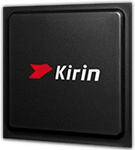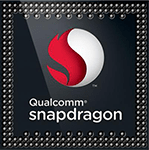
HiSilicon Kirin 985 5G Benchmark, Test and specs
Last updated:
The HiSilicon Kirin 985 5G has 8 CPU cores and can process 8 threads at the same time. The processor was presented in Q2/2020 and is based on the 7. Generation of the HiSilicon Kirin series. In the Geekbench 5 benchmark, the HiSilicon Kirin 985 5G achieved a result of 684 points (single-core) or 2,517 points (multi-core).
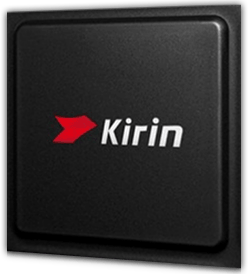
| Name: | HiSilicon Kirin 985 5G |
|---|---|
| Family: | HiSilicon Kirin (29) |
| CPU group: | HiSilicon Kirin 980 (2) |
| Architecture: | Cortex-A76 / Cortex-A55 |
| Segment: | Mobile |
| Generation: | 7 |
| Predecessor: | -- |
| Successor: | -- |
CPU Cores and Base Frequency
The HiSilicon Kirin 985 5G has 8 cores. The clock frequency of the HiSilicon Kirin 985 5G is 2.58 GHz. An initial performance assessment can be made using the number of CPU cores.
| CPU Cores / Threads: | 8 / 8 |
|---|---|
| Core architecture: | hybrid (Prime / big.LITTLE) |
| A-Core: | 1x Cortex-A76 |
| B-Core: | 3x Cortex-A76 |
| C-Core: | 4x Cortex-A55 |
| Hyperthreading / SMT: | No |
|---|---|
| Overclocking: | No |
| A-Core Frequency: | 2.58 GHz |
| B-Core Frequency: | 2.40 GHz |
| C-Core Frequency: | 1.84 GHz |
Internal Graphics
The HiSilicon Kirin 985 5G has an integrated graphics that the system can use to efficiently play back videos. The HiSilicon Kirin 985 5G has the ARM Mali-G77 MP8 installed, which has 8 streaming multiprocessors (128 shaders).
| GPU name: | ARM Mali-G77 MP8 |
|---|---|
| GPU frequency: | 0.80 GHz |
| GPU (Turbo): | No turbo |
| Compute units: | 8 |
| Shader: | 128 |
| Hardware Raytracing: | No |
| Release date: | Q2/2019 |
| Max. displays: | 1 |
|---|---|
| Generation: | Vallhall 1 |
| Direct X: | 12 |
| Technology: | 7 nm |
| Max. GPU Memory: | 4 GB |
| Frame Generation: | No |
Hardware codec support
Processors with integrated graphics can process video codecs faster. Support for modern codecs can significantly increase system efficiency during video playback.
| h265 / HEVC (8 bit): | Decode / Encode |
|---|---|
| h265 / HEVC (10 bit): | Decode / Encode |
| h264: | Decode / Encode |
| VP8: | Decode / Encode |
| VP9: | Decode / Encode |
| AV1: | Decode |
|---|---|
| AVC: | Decode / Encode |
| VC-1: | Decode / Encode |
| JPEG: | Decode / Encode |
Memory & PCIeThe HiSilicon Kirin 985 5G supports a maximum of memory. Depending on the mainboard, the processor can use a maximum of 4 (Quad Channel) memory channels. This results in a maximum bandwidth of the main memory of --. |
|
| Memory type: | Memory bandwidth: |
|---|---|
| LPDDR4X-2133 | -- |
| Max. Memory: | |
| Memory channels: | 4 (Quad Channel) |
| ECC: | No |
| PCIe: | |
| PCIe Bandwidth: | -- |
Thermal ManagementThe HiSilicon Kirin 985 5G has a TDP of . Based on the TDP, the system manufacturer can and must adapt the cooling solution to the processor. |
|
|---|---|
| TDP (PL1 / PBP): | |
| TDP (PL2): | -- |
| TDP up: | -- |
| TDP down: | -- |
| Tjunction max.: | -- |
Technical details
Modern production reduces the waste heat of a processor and increases its efficiency. The HiSilicon Kirin 985 5G is made in 7 nm and has 0.00 MB cache.
| Technology: | 7 nm |
|---|---|
| Chip design: | Chiplet |
| Socket: | -- |
| L2-Cache: | -- |
| L3-Cache: | -- |
| AES-NI: | No |
| Operating systems: | Android |
| Virtualization: | None |
|---|---|
| Instruction set (ISA): | Armv8-A (64 bit) |
| ISA extensions: | -- |
| Release date: | Q2/2020 |
| Release price: | -- |
| Part Number: | Hi6290 |
| Documents: | -- |
Rate this processor
Benchmark results

The benchmark results for the HiSilicon Kirin 985 5G have been carefully checked by us. We only publish benchmark results that have been created by us or that have been submitted by a visitor and then checked by a team member. All results are based on and fullfill our benchmark guidelines.
Geekbench 5, 64bit (Single-Core)
Geekbench 5 is a cross plattform benchmark that heavily uses the systems memory. A fast memory will push the result a lot. The single-core test only uses one CPU core, the amount of cores or hyperthreading ability doesn't count.
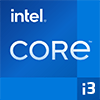
|
Intel Core i3-3250
2C 4T @ 3.50 GHz |
||
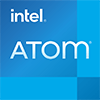
|
Intel Atom x6211E
2C 2T @ 3.00 GHz |
||

|
Intel Core i3-2130
2C 4T @ 3.40 GHz |
||
|
|
HiSilicon Kirin 985 5G
8C 8T @ 2.58 GHz |
||
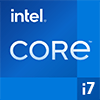
|
Intel Core i7-6822EQ
4C 8T @ 2.80 GHz |
||

|
Intel Core i7-3612QM
4C 8T @ 3.10 GHz |
||
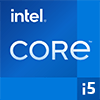
|
Intel Core i5-4288U
2C 4T @ 3.10 GHz |
||
Geekbench 5, 64bit (Multi-Core)
Geekbench 5 is a cross plattform benchmark that heavily uses the systems memory. A fast memory will push the result a lot. The multi-core test involves all CPU cores and taks a big advantage of hyperthreading.

|
AMD Ryzen 5 2500U
4C 8T @ 3.00 GHz |
||

|
Intel Core i5-6300HQ
4C 4T @ 2.70 GHz |
||

|
Intel Core i5-6350HQ
4C 4T @ 2.70 GHz |
||
|
|
HiSilicon Kirin 985 5G
8C 8T @ 2.58 GHz |
||

|
Intel Core i7-4702HQ
4C 8T @ 2.90 GHz |
||
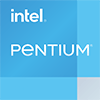
|
Intel Pentium Silver N6005
4C 4T @ 3.00 GHz |
||

|
AMD FX-8320
8C 8T @ 3.75 GHz |
||
iGPU - FP32 Performance (Single-precision GFLOPS)
The theoretical computing performance of the internal graphics unit of the processor with simple accuracy (32 bit) in GFLOPS. GFLOPS indicates how many billion floating point operations the iGPU can perform per second.

|
AMD Opteron X3421
AMD Radeon R7 - 512 (Toronto) @ 0.80 GHz |
||

|
AMD RX-421BD
AMD Radeon R7 - 512 (Merlin Falcon) @ 0.80 GHz |
||

|
Intel Core i7-13700K
Intel UHD Graphics 770 @ 1.60 GHz |
||
|
|
HiSilicon Kirin 985 5G
ARM Mali-G77 MP8 @ 0.80 GHz |
||

|
Intel Core i7-14650HX
Intel UHD Graphics 13th Gen (32 EU) @ 1.60 GHz |
||

|
Intel Core i7-14700HX
Intel UHD Graphics 13th Gen (32 EU) @ 1.60 GHz |
||

|
Intel Core i7-13850HX
Intel UHD Graphics 13th Gen (32 EU) @ 1.60 GHz |
||
AnTuTu 8 Benchmark
The AnTuTu 8 Benchmark measures the performance of a SoC. AnTuTu benchmarks the CPU, GPU, Memory as well as the UX (User Experience) by simulating browser and app usage. AnTuTu can benchmark any ARM CPU that runs under Android or iOS. Devices may not be directly compareable if the benchmark has been performed under different operating systems.
In the AnTuTu 8 benchmark, the single-core performance of a processor is only slightly weighted. The evaluation consists of the multi-core performance of the processor, the speed of the RAM and the performance of the internal graphics.
In the AnTuTu 8 benchmark, the single-core performance of a processor is only slightly weighted. The evaluation consists of the multi-core performance of the processor, the speed of the RAM and the performance of the internal graphics.

|
Apple A12 Bionic
6C 6T @ 2.49 GHz |
||
|
|
HiSilicon Kirin 980
8C 8T @ 2.60 GHz |
||

|
MediaTek Dimensity 820
8C 8T @ 2.60 GHz |
||
|
|
HiSilicon Kirin 985 5G
8C 8T @ 2.58 GHz |
||

|
MediaTek Kompanio 820
8C 8T @ 2.20 GHz |
||
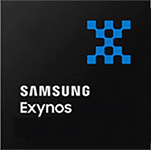
|
Samsung Exynos 9820
8C 8T @ 2.70 GHz |
||
|
|
HiSilicon Kirin 820 5G
8C 8T @ 2.36 GHz |
||
Benchmarks

Geekbench 5 (SC)
2,488 entries
2,488 entries

Geekbench 5 (MC)
2,461 entries
2,461 entries

FP32 SP (iGPU)
2,042 entries
2,042 entries

AnTuTu 8 Benchmark
118 entries
118 entries
Popular comparisons
back to index



